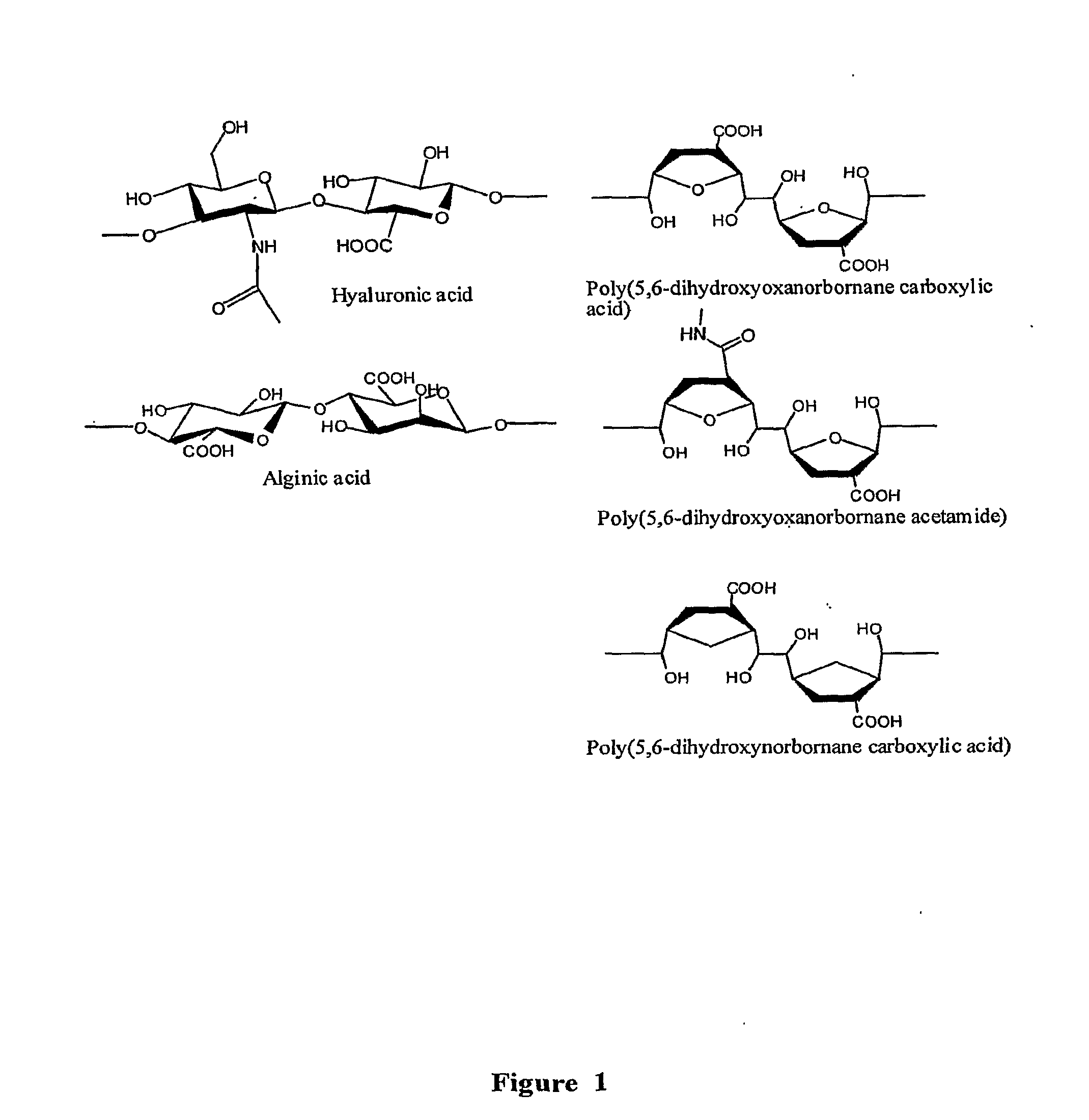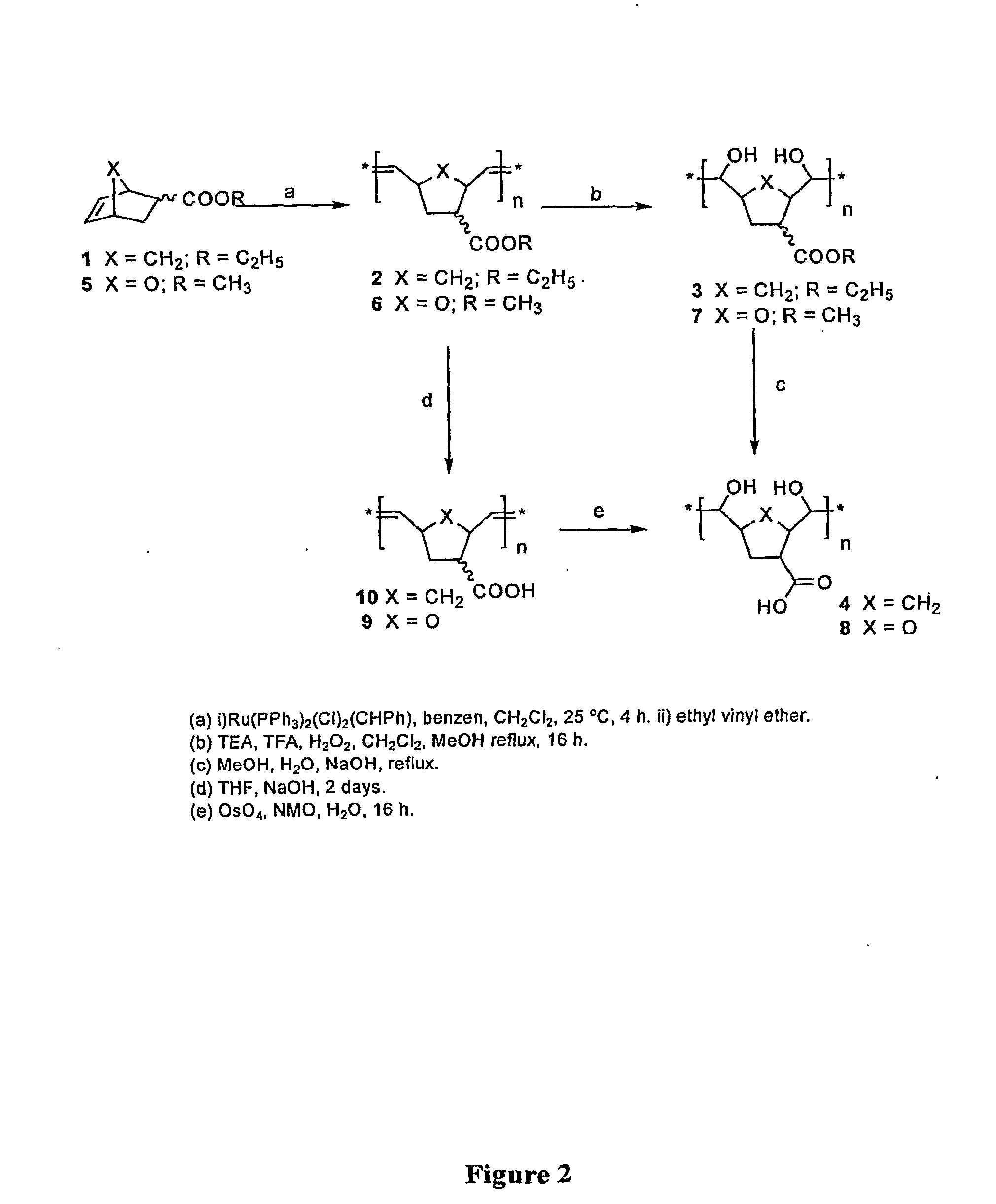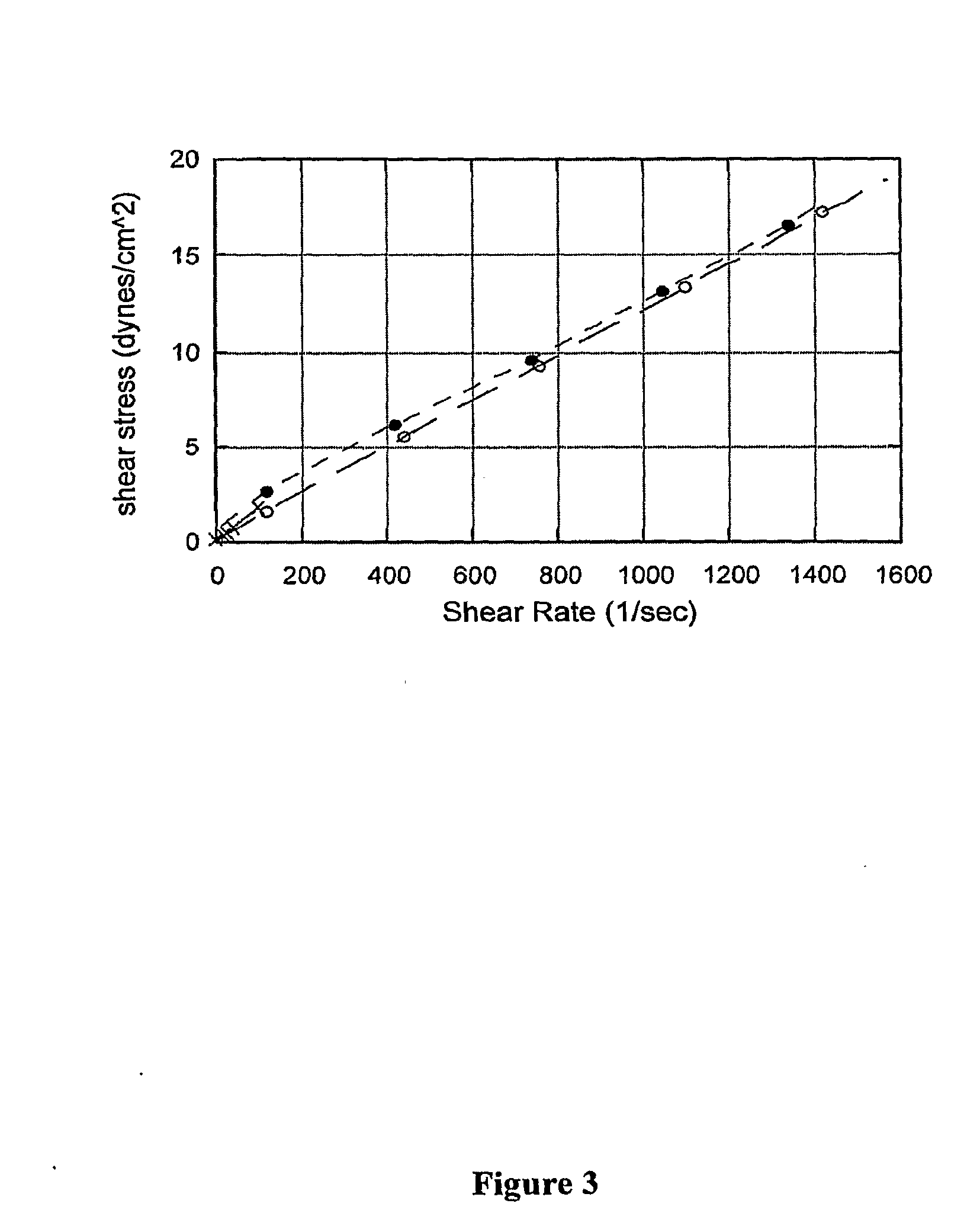Novel hydrophilic polymers as medical lubricants and gels
a technology of hydrophilic polymers and gels, applied in the direction of prosthesis, drug compositions, peptides, etc., can solve the problems of pain, swelling, loss of joint motion, and pain of patients, and the current availability of hyaluronate preparations have only limited long-term benefits for patients, and pain and swelling of patients
- Summary
- Abstract
- Description
- Claims
- Application Information
AI Technical Summary
Problems solved by technology
Method used
Image
Examples
example 1
Synthesis of Polysaccharide Mimics
[0175]Experimental Section: All reactions were carried out at room temperature in oven-dried glassware. All solvents were distilled prior to use. Gel permeation chromatography (GPC) was performed either with tetrahydrofuran (THF) as eluent through a Water HR-5 organic column or with water as eluent through a Shodex-OH pack column. All molecular weights were measured against polystyrene standards for THF polymers and against dextran standards for water soluble polymers. Proton NMR spectra were recorded on a Varian Inova 4000 MHz spectrometer, chemical shifts are reported downfield from tetramethylsilane in parts per million. Broad or overlapping peaks, often observed in the spectra of polymers are denoted “br” below.
Ethyl-5-norbornene-2-carboxylate, 1
[0176]The monomer was prepared by combining oxalyl chloride (23.0 mL, 264 mmol), freshly distilled dichloromethane (CH2Cl2, 120 mL), and an endo / exo mixture of 5-norbornene-2-carboxylic acid (11.3 g, 0.0...
example 2
Physical Properties of Polysaccharide Mimics
[0201]Coefficient of friction measurements were performed on a RA 1000 controlled strain rheometer from TA Instrument equipped with a peltier temperature control. A 40 mm diameter steel plate was used for the measurement of coefficients of friction. Coefficient of friction measurements were performed at 25° C. A normal force of 5N was applied to the viscoelastic material and an oscillatory frequency sweep (from 0.01 to 10 Hz) with a controlled strain of 1% was performed at 25° C. This measures the oscillation stress of the material, which can then be converted to coefficient of friction using the normal stress. Data are reported at a frequency of 1 Hz. As shown in FIG. 6, polymer 9 was found to have a coefficient of friction similar to HA.
[0202]Viscosity measurements were performed on a RA 1000 controlled strain rheometer from TA Instrument equipped with a peltier temperature control. A 40 mm diameter steel plate with a 2° angle with a gap...
example 3
Injection of Polysaccharide Mimics
[0205]New Zealand White Rabbit elbow joints were used to perform lubricant injections. Polymer 9 was mixed with an iodinated contrast agent (10% by volume) and stirred to ascertain a uniform mixture. The synovial joint space was accessed using a 22G needle under fluoroscopic guidance (OEC 6600). The native synovial fluid was removed, then the mixture (containing the polymer and contrast agent) was injected into the joint space. The delivery of the mixture into the joint space was ascertained by X-ray. FIG. 7 shows X-ray pictures of a New Zealand White Rabbit elbow joint injected with the mixture of polymer 9 and contrast agent.
Other Embodiments
[0206]Other embodiments of the invention will be apparent to those skilled in the art from a consideration of the specification or practice of the invention disclosed herein. It is intended that the specification and Examples be considered as exemplary only, with the true scope of the invention being indicated...
PUM
| Property | Measurement | Unit |
|---|---|---|
| molecular weight | aaaaa | aaaaa |
| contact angle | aaaaa | aaaaa |
| contact angle | aaaaa | aaaaa |
Abstract
Description
Claims
Application Information
 Login to View More
Login to View More - R&D
- Intellectual Property
- Life Sciences
- Materials
- Tech Scout
- Unparalleled Data Quality
- Higher Quality Content
- 60% Fewer Hallucinations
Browse by: Latest US Patents, China's latest patents, Technical Efficacy Thesaurus, Application Domain, Technology Topic, Popular Technical Reports.
© 2025 PatSnap. All rights reserved.Legal|Privacy policy|Modern Slavery Act Transparency Statement|Sitemap|About US| Contact US: help@patsnap.com



